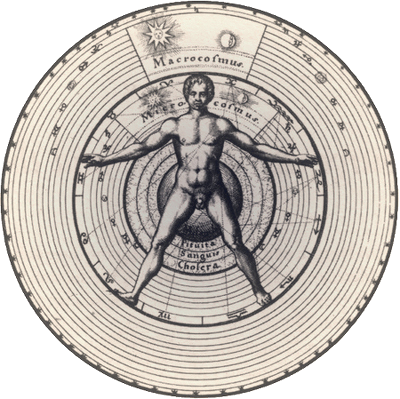The Germanwings crash: a warning light
The recent tragic crash of the Germanwings’ Airbus-320 has painfully re-opened a Pandora’s box that was cautiously closed after September 11, 2001. For years the international civil aviation organizations have worked very hard in assuming any possibile technical failure that could endanger a passengers flight, up to equip the modern civil aircrafts of the most sophisticated equipment and software available. The redundancy of the equipment on board and their reliability guarantee today a very high flight safety and those agencies never stop their control, studies and verification actions on these issues.
Only one risk is always looking to the most amazing news: the human mind imponderability.
 Let’s retrace the facts: Andreas Lubitz, the Germanwings copilot, from long time suffering from acute depression, in a crazy decision took advantage of the temporary absence of the commander in the cabin to lock the access door and put into practice his suicide/murder action. Captain’s attempts to force the door have gone for nothing. We recall that this barrier has been made mandatory on all civil aircraft from September 11, 2001 to prevent potential terrorist access to the cockpit. In other words: the effective solution of a problem turned out to be the main impediment to prevent a tragedy.
Let’s retrace the facts: Andreas Lubitz, the Germanwings copilot, from long time suffering from acute depression, in a crazy decision took advantage of the temporary absence of the commander in the cabin to lock the access door and put into practice his suicide/murder action. Captain’s attempts to force the door have gone for nothing. We recall that this barrier has been made mandatory on all civil aircraft from September 11, 2001 to prevent potential terrorist access to the cockpit. In other words: the effective solution of a problem turned out to be the main impediment to prevent a tragedy.
Through technology, man has created perfect machines. We are today able to predict and correct all errors from the machines we created (mechanical, electronic, software, etc.), but the most difficult – and perhaps impossible – to predict lies precisely in the wonderful, winding mechanisms of our mind. We should not also underestimate how much the general sense of confusion, bewilderment and uncertainty that involves every level of existence (both as individuals and communities) in modern society, is increasingly responsible for moods that tend to isolation and to severe depressive phenomena. This is an element that for too long has been overlooked in the most common processes of design/analysis of complex technological procedures.
But – as always happens in similar cases – it is also necessary today to respond to the relatives of the victims and to a frightened public opinion. No answer will ever ease the pain of the first, which will never find the strength to face their loss if not as a result of a long debate with themselves, with the larger mysteries that surround our existence. Public opinion, constantly bombarded by reports of strong emotional impact, could generate a state of panic as to ask immediate guarantees on the unrepeatability of the causes of the accident. However in this case the cause is not due to an engine or a radar failure, an easy solution to quell the general fears by imposing the mandatory or redundancy of the mechanical/electronic instrument, hiding any human error (always repeatable). Here we are faced with a psychic problem of a man.
In October 2001, following the tragic disaster at Linate airport that caused the death of 118 people, the determined cause was the absence of the ground radar, avoiding to face with the combination of two human errors. In this way, the consciousness of the public opinion was reassured by the completion of the installation of the electronic equipment in the airport.
In addition to knowing how to conduct an aircraft in flight, moderns pilots are today also super-controllers for the equipment in their use. If a system shows failure signs, they should be able to exclude it and activate the stand by one; they must be able to take quick decisions that allow the technology to implement the planned safety measures and expertly direct the wonderful orchestra of instruments at their command. But all this requires that the man at the controls has an healthy, balanced and – above all – free from exogenous stress mind.
 Current regulations require that every pilot undertakes a medical examination once a year. This visit is generally very scrupulous, performed at the Institutes of Forensic Medicine and seeks to ensure that all the physical parameters of the patient falls in what are defined as the boundaries to perform the difficult job. While on one hand this procedure has a good rate of success, on the other hand it shows a large gap: it is extremely difficult, if not impossible, for an expert to determine any dangerous drift of the patient’s mind or any latent threats that lurk in the far corners of his hidden world in just a single annual visit.
Current regulations require that every pilot undertakes a medical examination once a year. This visit is generally very scrupulous, performed at the Institutes of Forensic Medicine and seeks to ensure that all the physical parameters of the patient falls in what are defined as the boundaries to perform the difficult job. While on one hand this procedure has a good rate of success, on the other hand it shows a large gap: it is extremely difficult, if not impossible, for an expert to determine any dangerous drift of the patient’s mind or any latent threats that lurk in the far corners of his hidden world in just a single annual visit.
Besides, it is not possible to speculate as to submit all the pilots to a constant psychotherapy path without risking, to solve a single problem, to increase the stress in the whole category, as well as to generate difficult and complicated contractual issues.
It is therefore necessary to modify the problem analysis process. This is the time when the largest international bodies that control and generate procedures and regulations for air safety (FAA, EASA, IATA, ICAO, etc.) will have to begin adopting real “transdisciplinary tables” to address the major issues in the sector. That is, experts around the table should no longer be individual personalities in the various disciplines that discuss to provide their files without any substantial interaction with others.
They will have to consider each discipline as important, but none of them will have a dominant role on the other. They will mainly focus on the types of connections not previously considered, they will communicate with each other, they will have to cross the rooted borders of their discipline through the exchange of ideas and different perspectives of observation. For further details, see “Transdisciplinarity: innovating rediscovering the man“.

